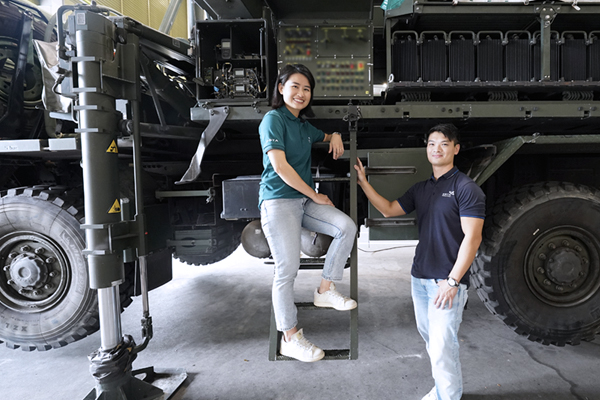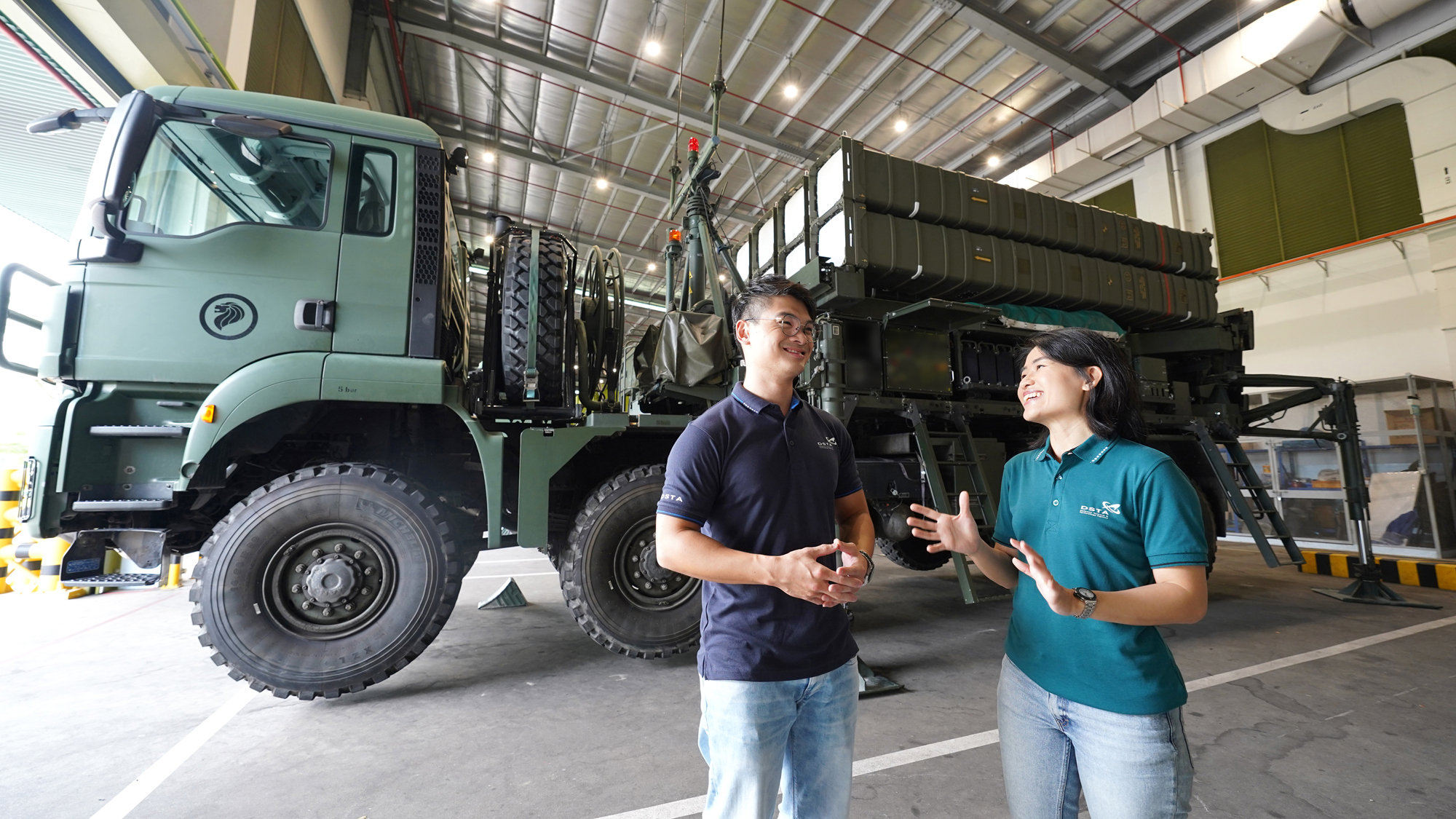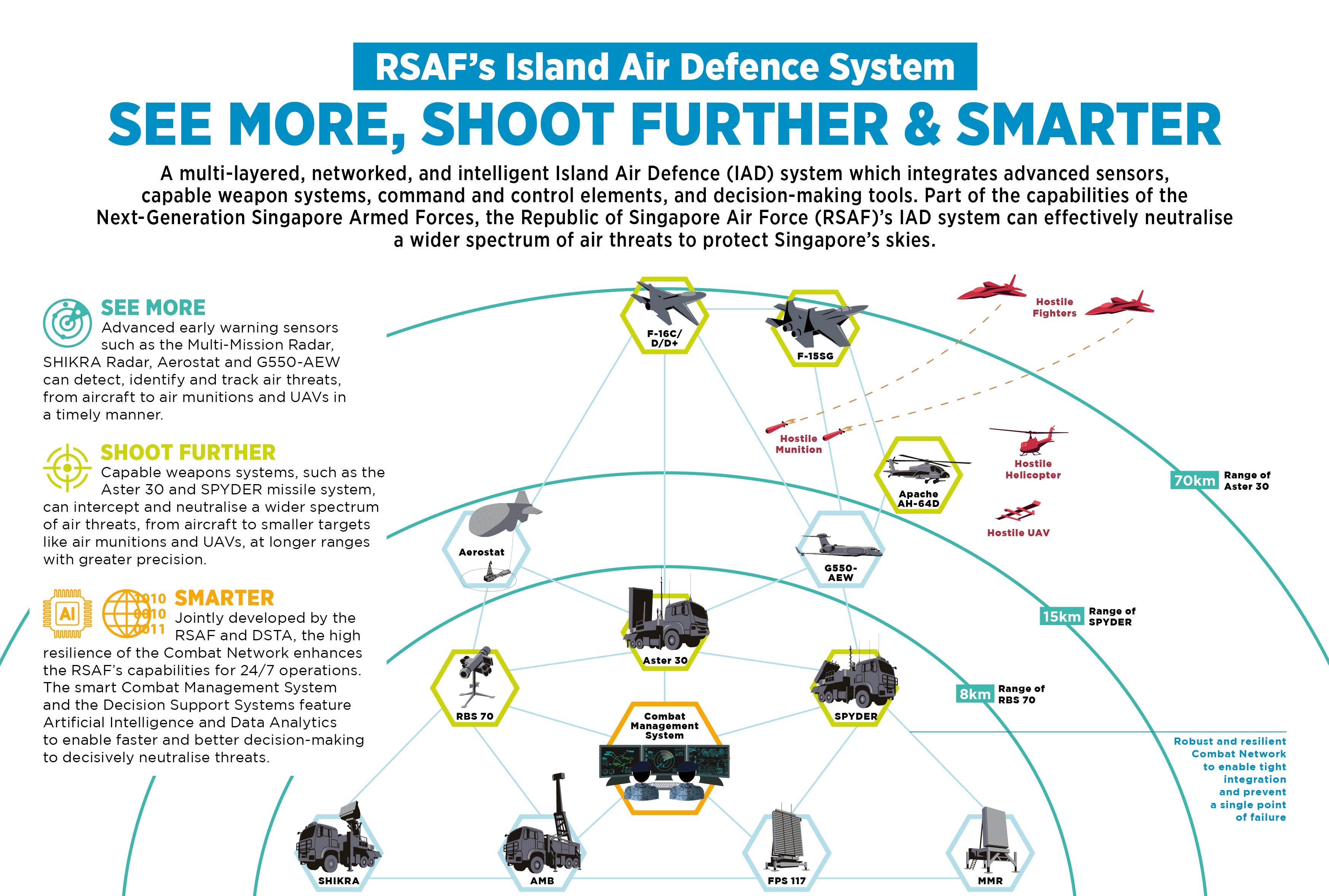19 Oct 2022
What do you see when you look up? Beyond the clear blue skies, our defence technologists see an invisible web made up of a myriad of advanced technologies that defend Singapore’s air space both day and night.
A multi-layered, networked, and intelligent air defence system, the RSAF’s Island Air Defence (IAD) system is the culmination of many years of multidisciplinary innovation. It comprises ground-based air defence systems such as the ASTER-30 Missile System and SPYDER, sensors such as the Multi-Mission Radar, command and control elements, and decision-making tools. All of these work together as a system of systems, and provide the SAF with the ability to neutralise a wide spectrum of air threats effectively for safer skies.
Two of the team members – Programme Manager (Systems Engineering and C3 Centre) Alvin Lee and Head (Cyber-Robotics) Chen Siying – sat down with us to share more.

Tell us more about the IAD system and what you did.
Alvin: The IAD system was designed to integrate sensors, weapon systems and the smart Combat Management System (CMS), which allows different air defence systems to be networked together and tailored to the RSAF’s unique operational needs. It also leverages technologies to enable rapid and seamless dissemination of time-critical information and data to all entities within the IAD system. By networking all of these together, we can enhance the RSAF’s situational awareness and improve the responsiveness of the overall air defence system.
We acquired sensors and weapon systems, and integrated them with Singapore’s air defence network that had been built indigenously. We also developed the smart CMS in-house so that it can be designed to best suit the RSAF’s unique needs.
Siying: We also worked closely with the RSAF to integrate and enhance the IAD system with key components such as the Multi-Mission Radar, System for Hybrid Interceptor Knowledge of Recognised Air Radar, and various weapon systems.
What did you contribute to the IAD system?
Alvin: I supported the integration of the CMS with the rest of the sensors and weapon systems, to ensure that all the separate and independent components worked well together. I also conducted the end-to-end verification and validation of the IAD system’s system safety and performance.
Siying: As a cyber engineer, I oversaw the security of aircraft, unmanned aerial vehicles, weapon systems such as those deployed in the IAD system network, and implemented cyber solutions to enhance the RSAF’s cyber monitoring capabilities. The intent was to help the RSAF detect and respond to any cyber threats effectively. I also collaborated with other agencies and industry partners to develop security solutions to meet the RSAF’s unique security requirements.
Could you share your favourite memory of the IAD system?
Alvin: I actually joined the project team halfway through the project. So I had to read up a lot on the system requirements and manuals to better appreciate the system design and considerations, before I could get my hands dirty and participate in the different phases of systems acceptance, integration and testing.
It was very challenging because of the massive amount of knowledge I had to absorb and internalise in a short amount of time to make sure I could contribute effectively to the programme. I’m very grateful to my teammates who were very generous with their help and support, and for bringing me up to speed with the programme.
Siying: DSTA encourages job rotations so we get exposed to different technologies. Personally, I switched from being a systems manager to a cybersecurity engineer. It was a coincidence that I used be the system manager for one of the IAD system’s weapon systems, and now I’m undertaking a different role to support the IAD system from a cybersecurity point of view.
My experience as a systems manager gave me important perspectives and insights for my new role when I made the switch. These helped to ensure that I was able to make practical recommendations when it came to security mitigation measures, as I could take into account operational constraints and downstream maintainability of the systems. It was interesting to be able to look at the same programme from two different perspectives, knowing that everyone on the IAD team is working together to deliver and sustain this important capability for the RSAF.

What does being a part of Singapore’s defence mean to you?
Alvin:Working in defence means getting lots of opportunities to be exposed to and be involved in the broad spectrum of tech activities that the Defence Technology Community is actively working on. With DSTA, I get to influence system designs, implement advanced technologies, and participate in cutting-edge technologies development and deliveries. There’s a lot to learn and do, and I find that incredibly satisfying and fulfilling.
Siying: Knowing that DSTA plays a pivotal role in Singapore’s defence and contributes directly to the protection of Singapore makes our careers exciting and meaningful. What’s even better is that the defence ecosystem is very dynamic and ever-changing, so every day is different.
Related Content:

